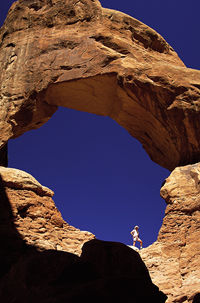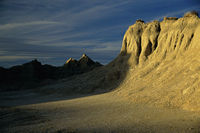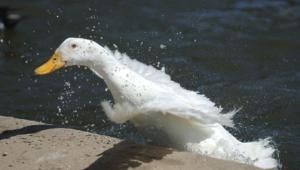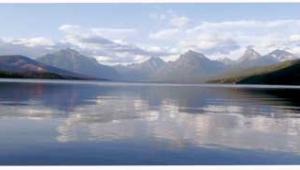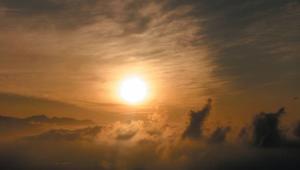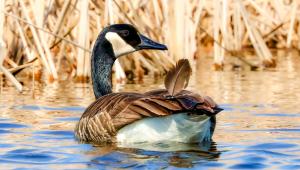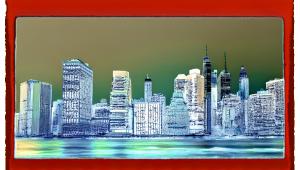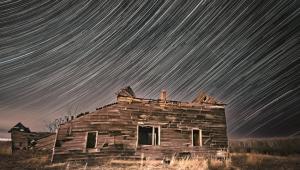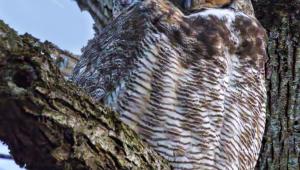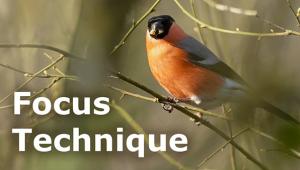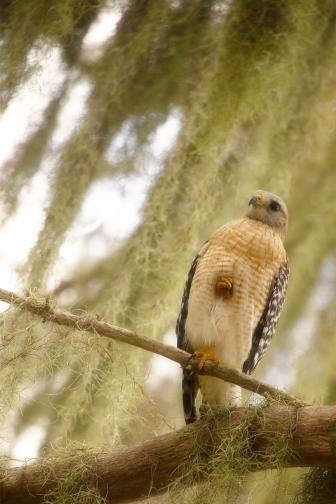Landscape Tips Page 2

We've all seen lots of shots of Half Dome from the classic vantage point (rumor has it Ansel's tripod holes are still there). So try photographing those famed landmarks from another spot (Olmstead Point, in this instance). Photo by Lynne Eodice. |
1. Find a New Spot
There's a saying among real-estate folks that "location is everything." Well, where you choose to set up is very important in photography, too. If you have the time when you're in the area, try to find a different vantage point to photograph those famous landmarks. It'll require some driving or hiking, but the reward will be landscape photos refreshingly different from the overdone postcard views. When seeking a camera spot, look for one that provides an attractive angle on the subject with no foreground obstructions, a good background, and good lighting. |
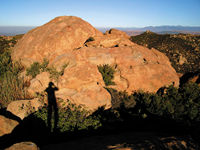
The shadow photographer takes in Rocky Peak. The summit block is small, but larger than it appears in this photo: the wide-angle lens makes the block look smaller, and the sun's low angle makes the photographer's shadow larger than life. Photo by Mike Stensvold.
You get the feeling this arch is pretty big, but the human element in the scene lets viewers know just how big it is. Photo by Lynne Eodice. |
2. The Human Touch
While purists try to keep human elements out of their landscape photos, you can add human interest by adding a human to a shot. A strategically placed person can also add scale, giving viewers an idea of the size of the landscape element they're looking at. If you're alone, and between the sun and the scene, you can use your own shadow to add the human element. But unless the sun is at a 45° angle, your shadow won't serve as an accurate scale device—when the sun is lower than 45°, your shadow will be longer than your true height, and when the sun is higher than 45°, your shadow will be shorter than your true height. |

Focusing on the nearby foliage threw the sun way out of focus, thus increasing its size in the image tremendously. Photo by Mike Stensvold. |
3. Big-Sun Secret
If you want a huge sun in your sunrise or sunset shots, just include a foreground subject near your lens' minimum focusing distance, and focus on it. The out-of-focus sun in the background will be huge. Don't look at sun through a telephoto lens—that can cause severe eye damage. Focus on the nearby subject with the sun just out of frame, then take your eye from the viewfinder and shift the camera to include the sun. A digicam with its LCD monitor can be a big help here, but you can do it with a film camera, too. Make several shots, and you should get at least one with the sun well positioned. |
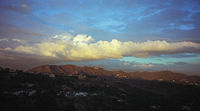
A clearing storm in late-afternoon light provides exciting lighting. Photo by Mike Stensvold.
Even Badlands can look good in good lighting—in this case, provided by late-afternoon sun. Photo by Lynne Eodice. |
4. Exciting Lighting
A skilled photographer can make a good landscape photograph pretty much anytime. But you can increase your odds of getting really striking images by shooting in exciting lighting. That occurs most often when the sun is low—i.e., at sunrise and sunset—or during a clearing storm. Low-angle sunlight creates long, dramatic shadows, emphasizes texture when falling across the subject (i.e., when the subject is sidelit by the sun), and is generally warmer than midday light, adding an orange cast that can enhance shots of rocky terrain (and outdoor portraits). The contrast between warm sunlit areas and cool shaded areas can add impact to a shot. |
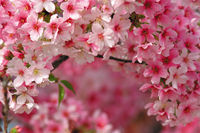
Hazy sun is great for flower shots, because contrast is low, yet there's some "life" to the lighting.
If it's really murky, concentrate on tight shots. The low light level provided a slow shutter speed to blur this mini-waterfall into cotton-candy. A tripod helps in dim light; this was shot with a hand-held digital SLR at a 480mm equivalent focal length.
Morning fog lent this mini-forest an enchanted touch. Photos by Mike Stensvold. |
5. Don't Give Up When It's Murky
If, despite your research and the weather forecast, the day is too murky to shoot epic scenic vistas, think closer. You likely can find all kinds of nearby things to photograph—greenery, flowers, insects, rocks and rock formations, reflections and more. Overcast or foggy light produces soft contrast, which can yield beautiful flower portraits. And foggy scenes offer great opportunities for "mood" shots. |
- Log in or register to post comments
